Night Сruise on the Seine, Paris
The evening program of the first day in Paris was continued by a water walk. At the pier at the foot of the Eiffel Tower, we climbed onto the deck of an absolutely fantastic boat, which is a trimaran with a wide deck covered with a transparent canopy.
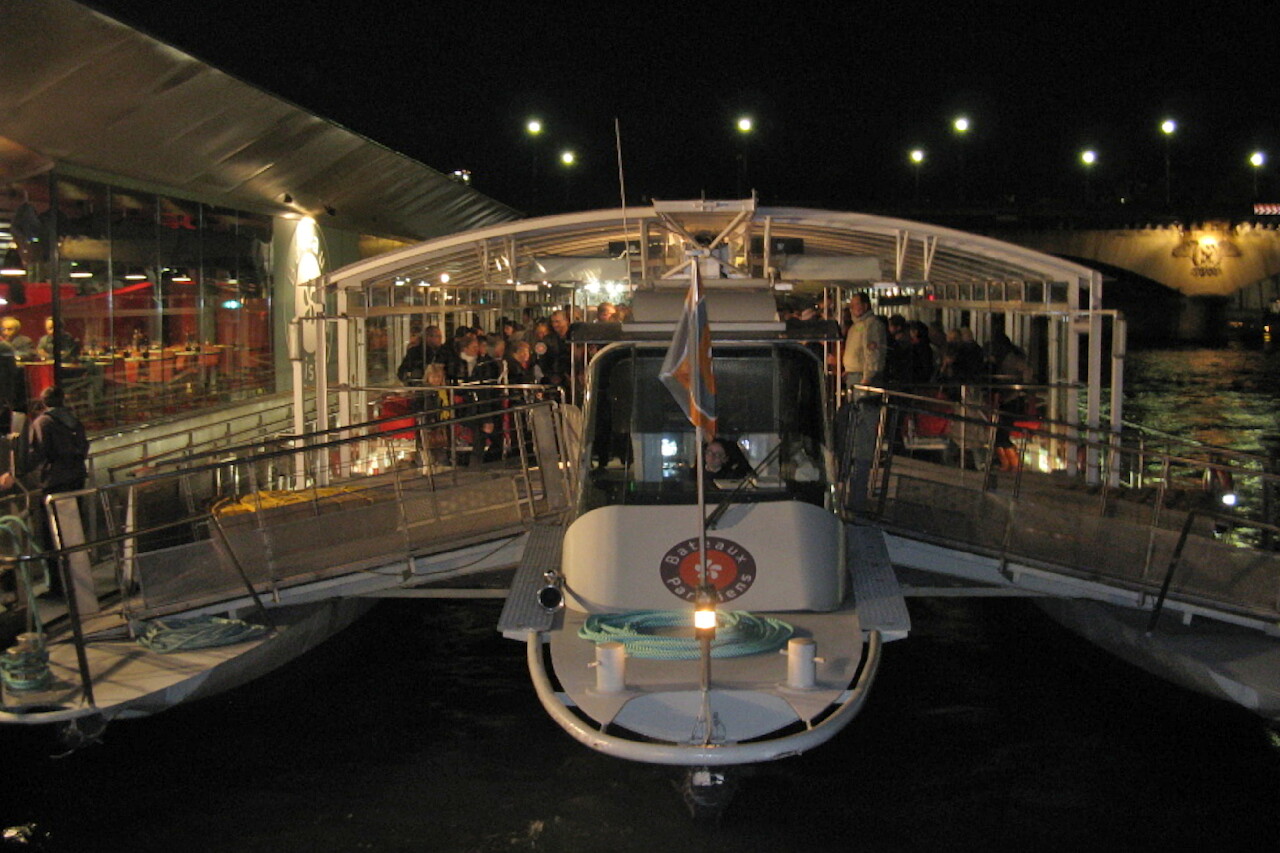
I don't know what the capacity of this ship is, but it is clear that it can take several hundred passengers on board. During the summer period, this is probably true, but on an October evening, the seats were occupied by barely a third. The canopy protects only from rain and crosswinds, but it is blown through during the course of the ship, so that warm clothes were not superfluous at all.
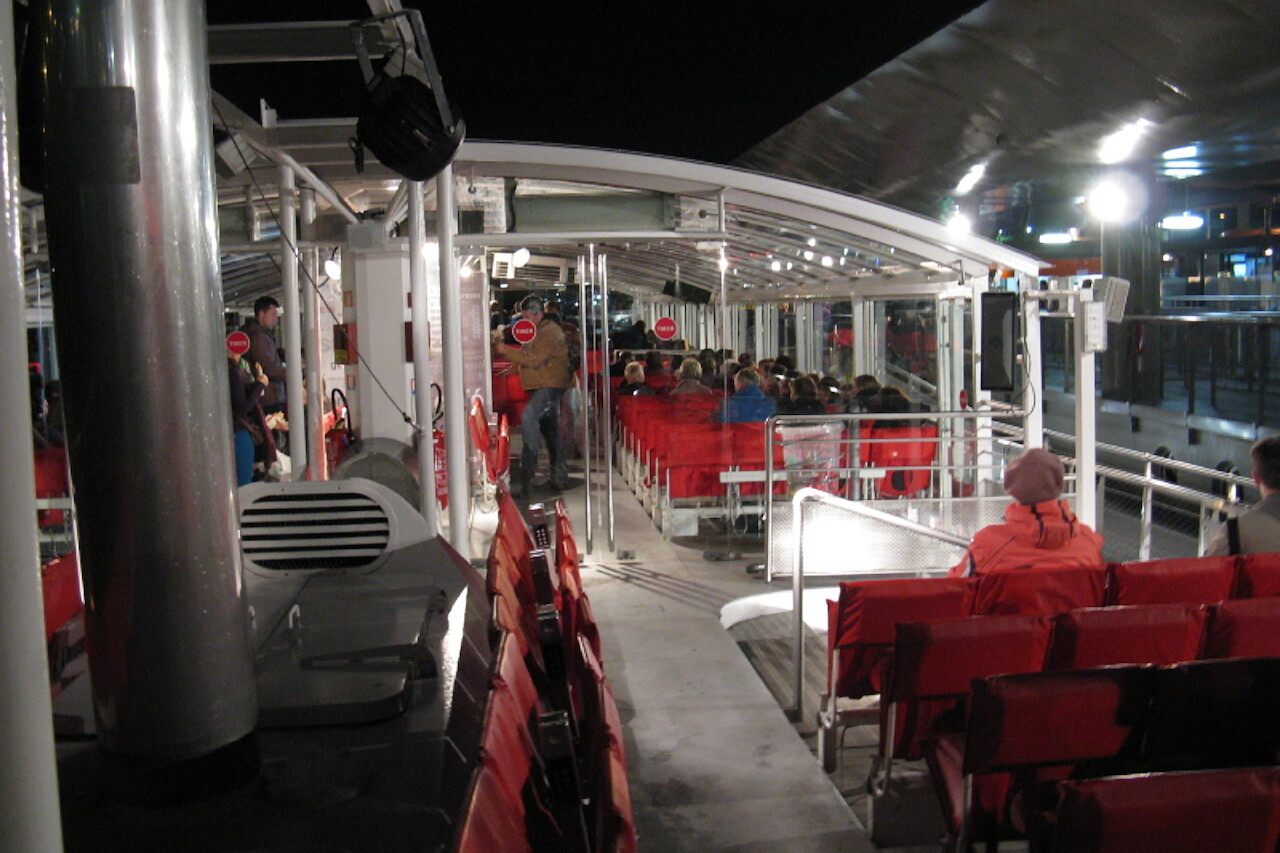
However, as soon as the ship began to move along the quays of Paris, such inconveniences as a chilly breeze immediately faded into the background. For particularly persistent lovers of contemplating the beauty of the river, there are reclining chairs on the narrow open parts of the deck along the sides.
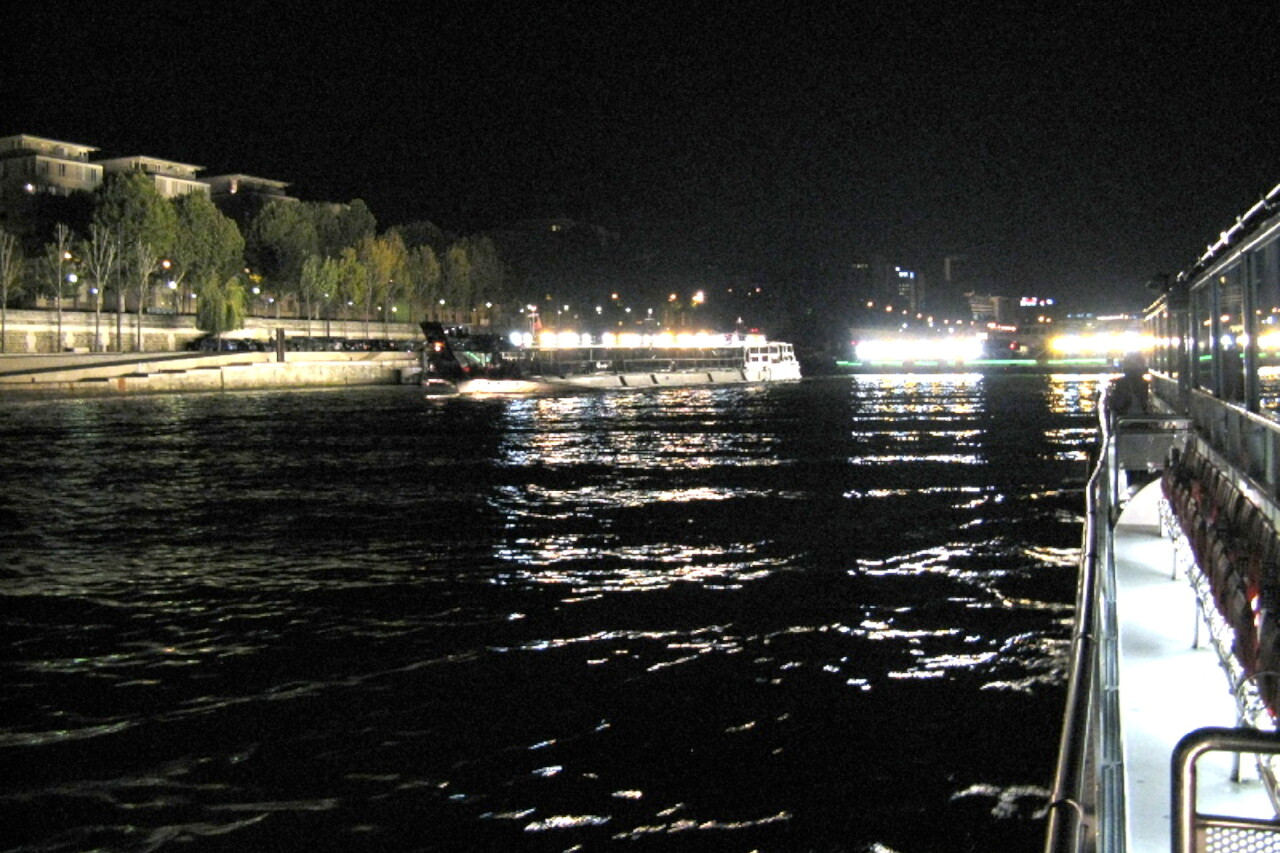
As a lover of water travel, I was primarily attracted to the ships of the Parisian pleasure fleet, which were saturated with the water surface of the Seine. I haven't seen such a variety of designs on more than one river.
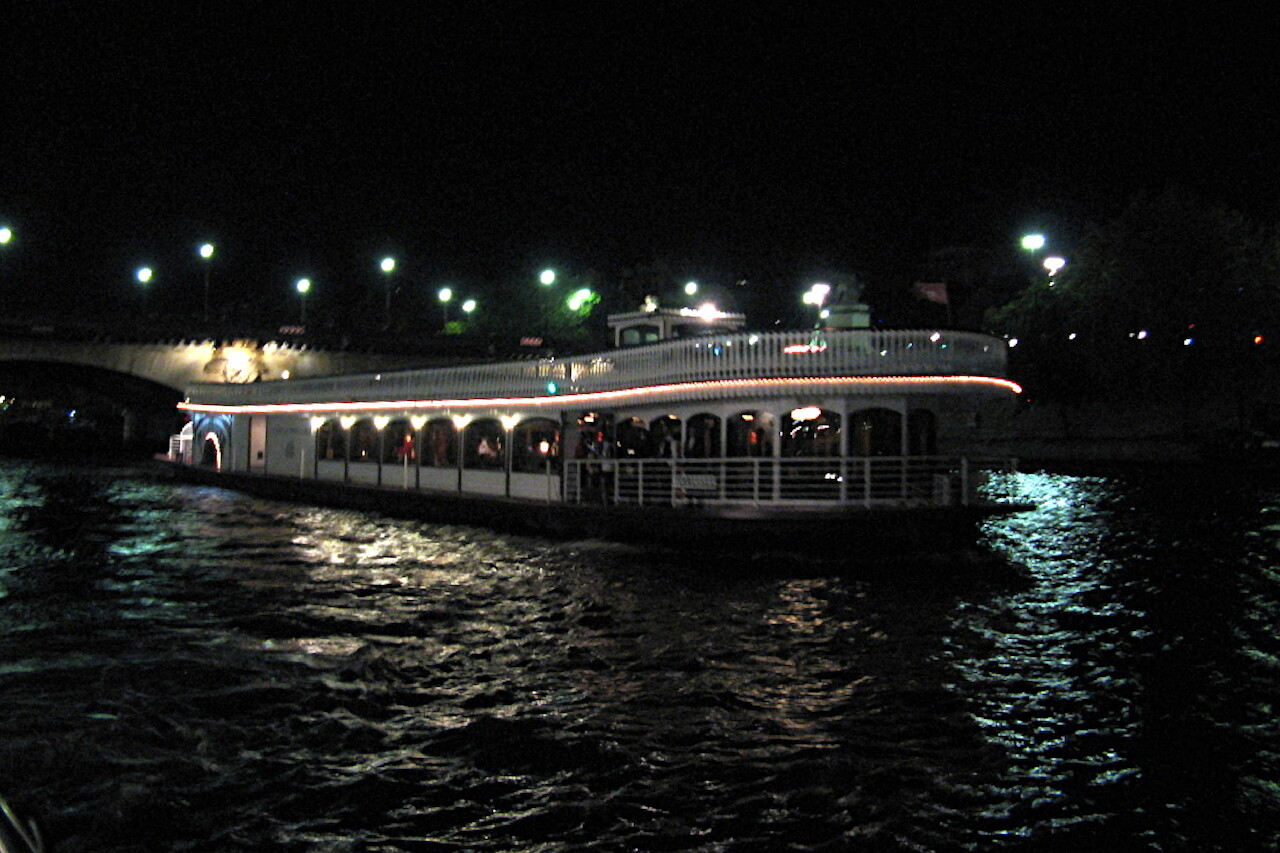
Then he turned his gaze to the quays, which in places were completely lost in darkness. Paris at night did not seem at all like a city full of round-the-clock life.
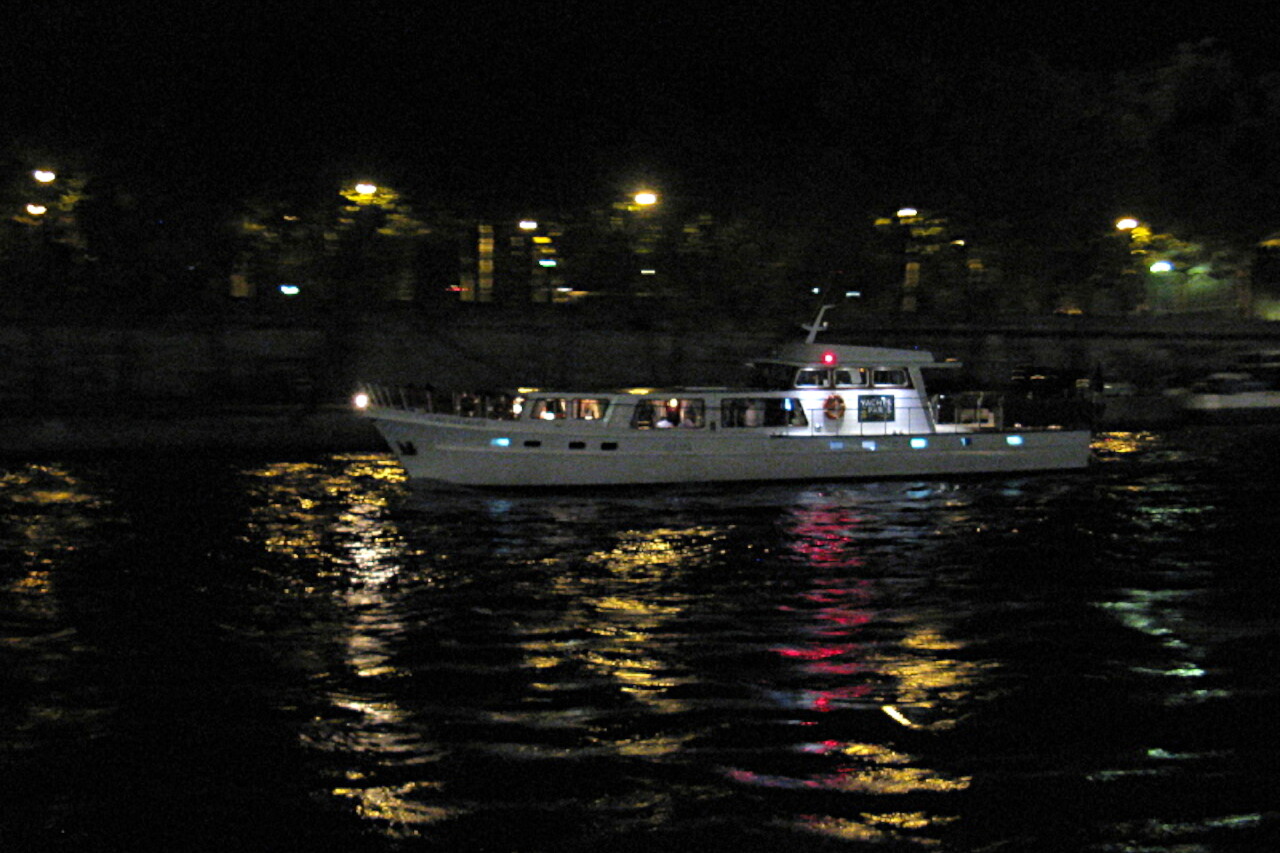
Only some houses had decorative lighting.
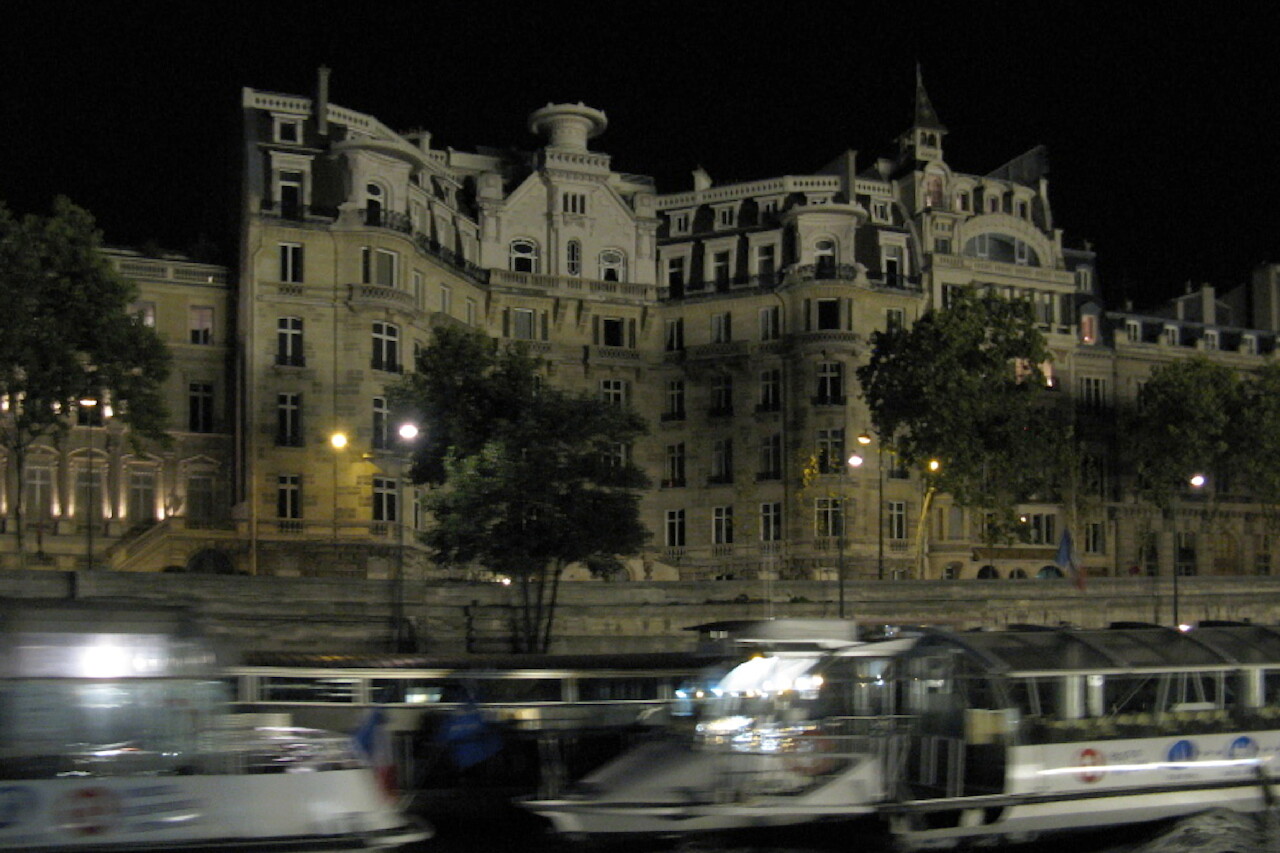
We reached the island of Cite, the place where Paris began, and in 504 King Clovis I built a residence here. Almost half of the island is occupied by Kosseri Castle, which served as a royal palace until the end of the 14th century. Then there was the Palace of Justice and the most famous prison in the world.
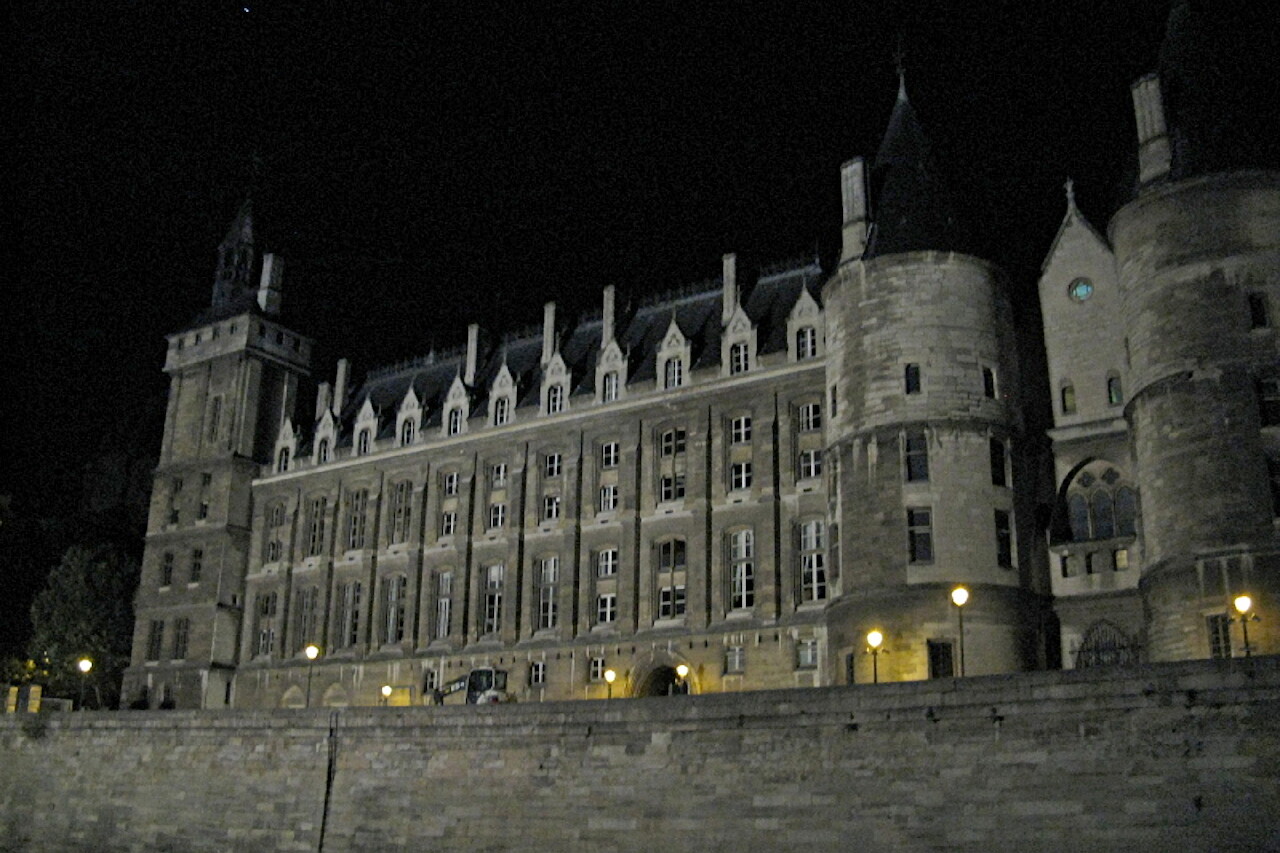
Then we passed under the Pont au Change, decorated with the initials of Napoleon III. The bridge became famous thanks to the novels of Victor Hugo "Notre-Dame de Paris "and"Les Miserables".
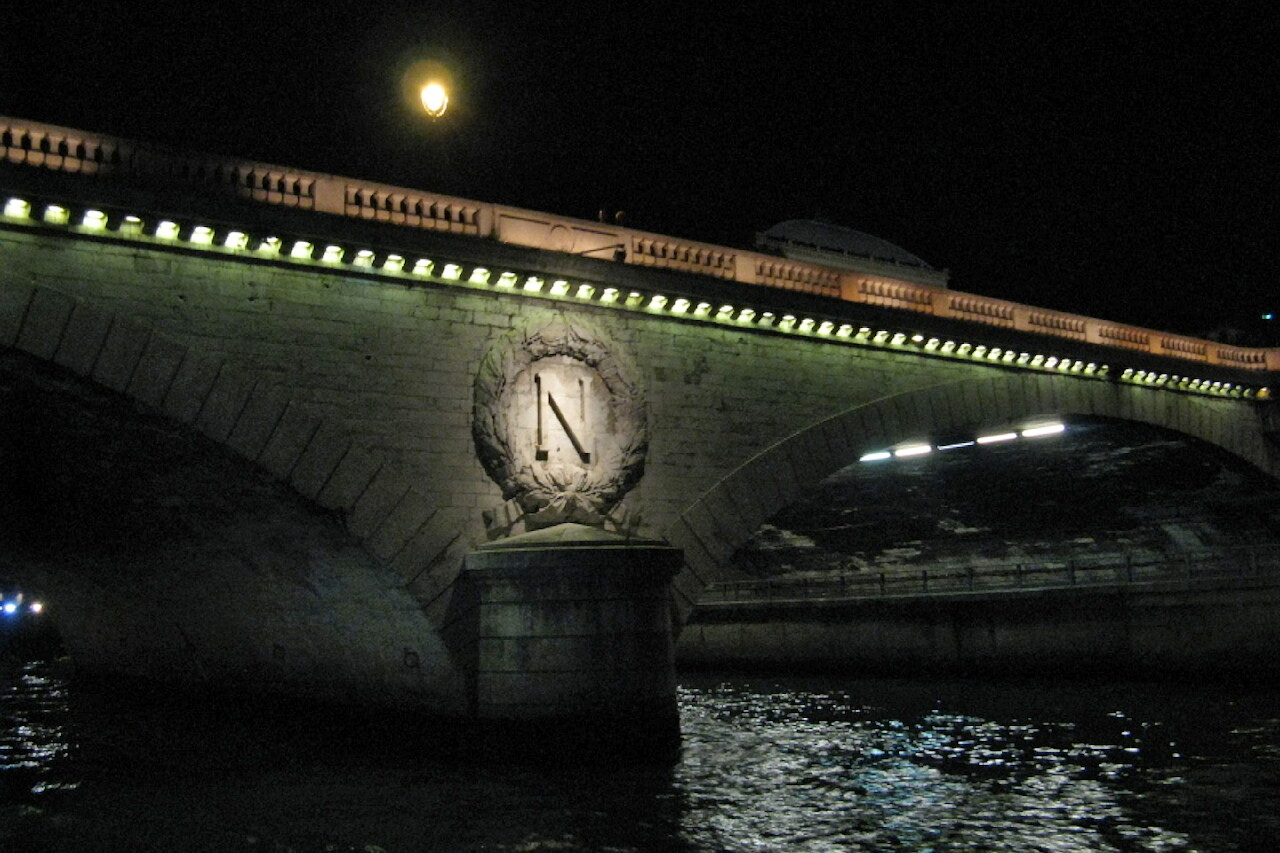
After passing along the island of Cité on the right bank of the Seine, our ship rounded the end of the island and headed back along the left arm. Behind the Petit Pont Bridge, you can see the main facade of Notre-Dame de Paris, built of white stone in the 12th and 14th centuries.
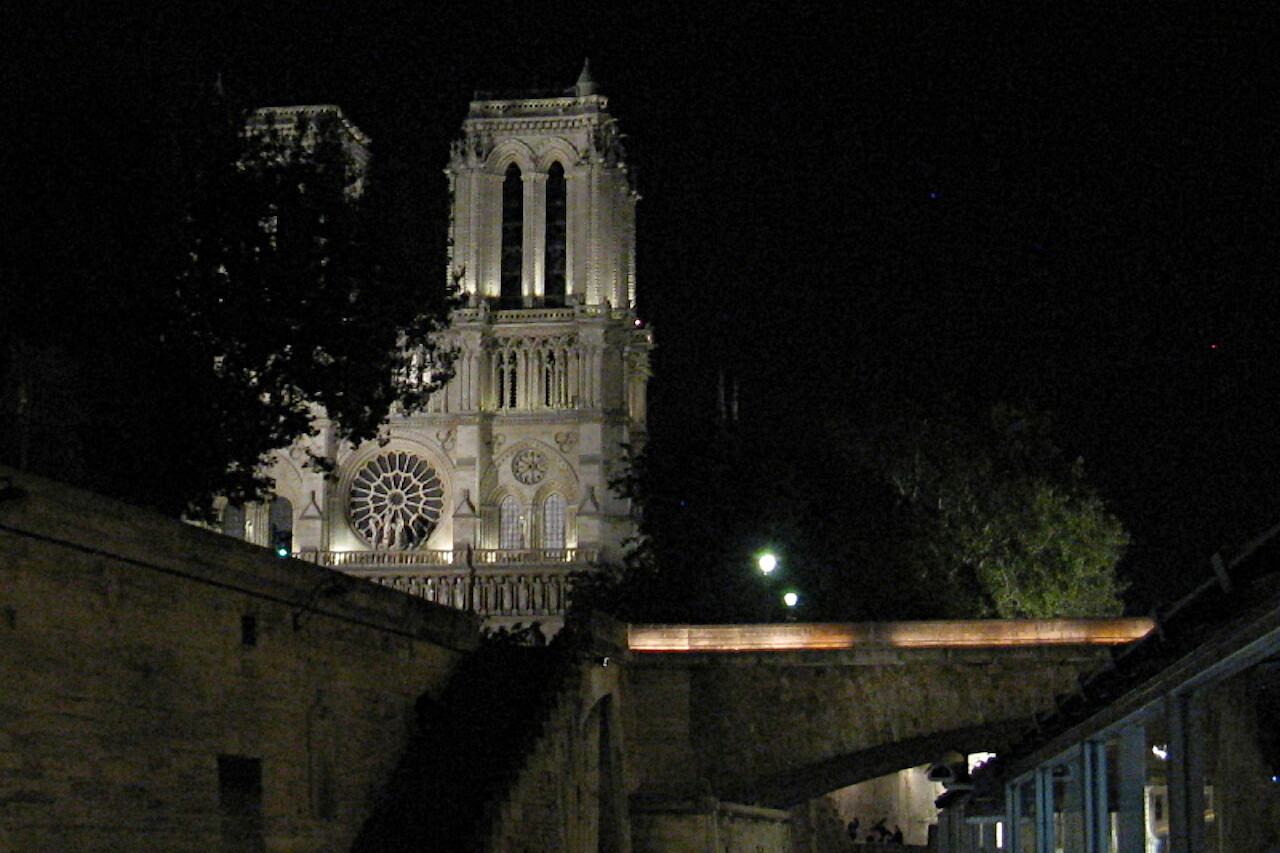
At the western tip of the island of Cité is the majestic building of the Institut de France, the main state scientific institution, which houses five academies, from its facade to the Louvre Palace leads the Pont des Arts (Pont des Arts), which in the 21st century has become widely known as the "bridge of lovers", thanks to the tradition of leaving "fidelity locks"on its railings. Over time, the number of locks reached a million and there was a danger of collapse of the bridge. In 2015, the city services cleared the bridge of this load and replaced the metal mesh of the fence with glass panels, to which there is no way to attach the lock. Let me remind you that my story is dated 2010, and as you can see, the bridge fence is still clean. Two years later, I had a chance to walk on this bridge, then the fence was completely hung with locks, you can see what it looked like in one of the further articles.
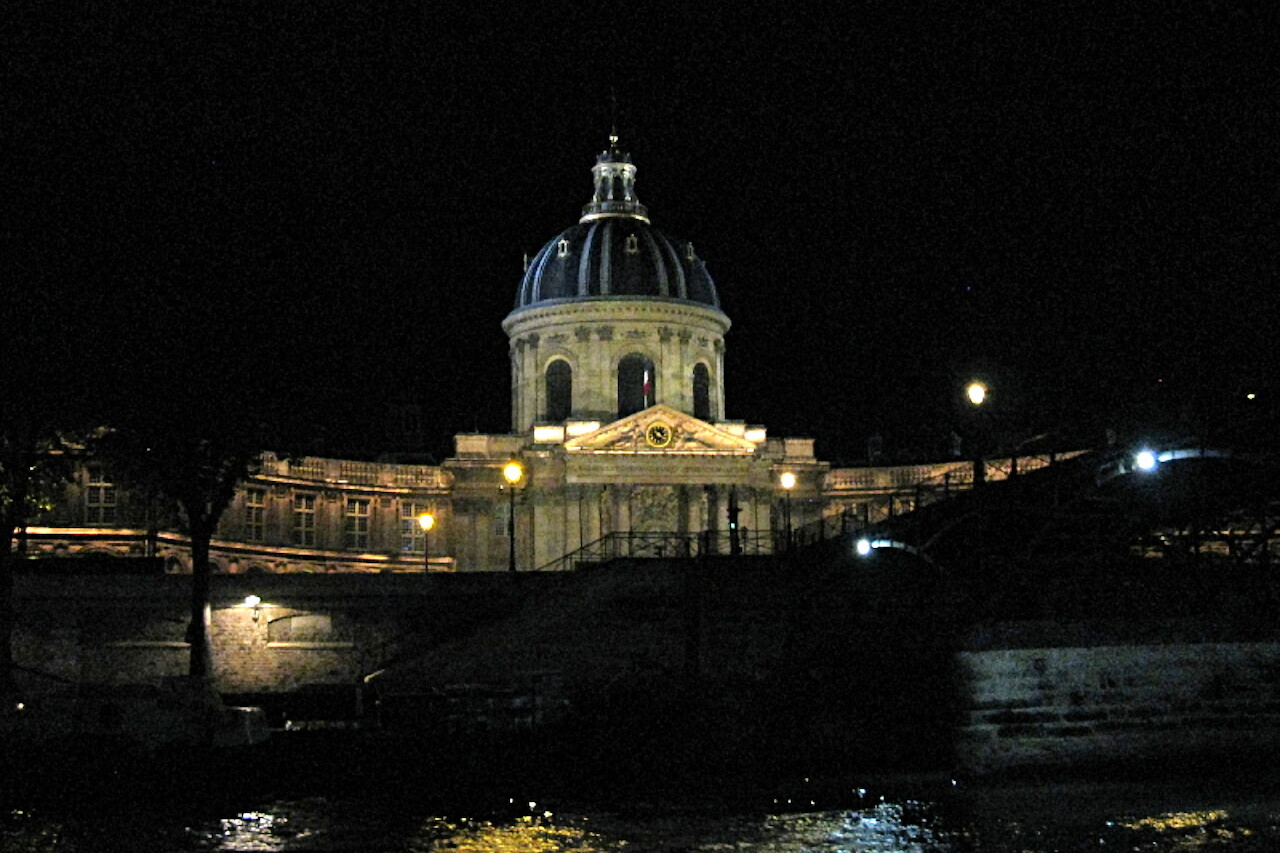
Finally, I went down to the hold of our amazing ship, where the toilets are located.

I will try to compensate for the small number of photos in this article with a small film about this cruise. Looking ahead, I want to say that a little over a year later I did a longer walk on the Seine in the daytime, which I will definitely tell you about.
Finally, I want to say that in a little over a year I did a longer walk on the Seine in the daytime, which I will definitely tell you about.
..